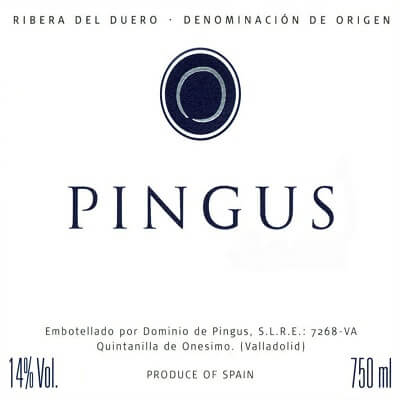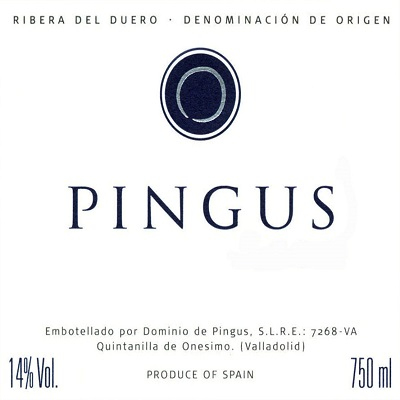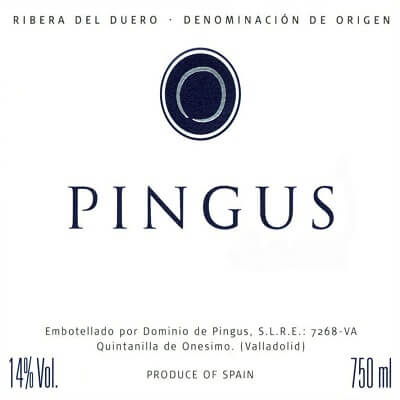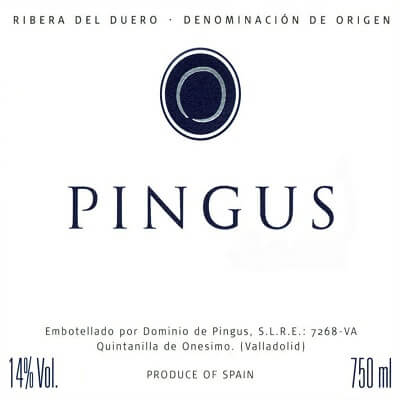Dominio de Pingus
About Dominio de Pingus
Nestled in the La Horra appellation of Ribera del Duero, Dominio de Pingus is an estate par excellence in the region, rising to consistently challenge and often surpass the mighty Vega-Sicilia.
Founded and run by a global fine wine icon, oenologist Peter Sisseck is something of an enigma. Born in Denmark, fate and an unrelenting love for the terroir of Spain’s rugged Ribera del Duero led the masterful vigneron to establish what has become a truly legendary estate in 1995. Rising further into the stratosphere than perhaps even Sisseck anticipated, given the relatively unknown nature of Ribera del Duero at the time (Vega-Sicilia aside of course), Pingus has transcended boundaries and oceans to be considered an equal of the grandest names of Bordeaux, the rarest crus of Burgundy and the smallest cult labels of Napa.
Viniculture
There are currently 3 wines produced by the estate: Flor de Pingus, a single barrel cuvée called Amelia (which began in 2003), and the flagship Pingus. In a normal vintage, there are usually about 4,000 cases of Flor de Pingus, 500 cases of Pingus and just 25 cases of Amelia. The vines are all over 35 years of age and have been farmed biodynamically since 2005.
The first vintage of Pingus was in 1995. The vines producing this fantastic wine are all at least 65 years of age and yields are typically under 1 ton per acre. The wine is 100% Tempranillo and is bottled without fining or filtration.
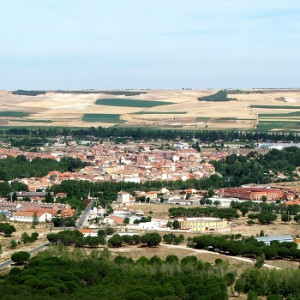

| Product Name | Region | Qty | Score | Price | |||||
|---|---|---|---|---|---|---|---|---|---|
|
|
Castilla y Leon | 1 | 96 (WA) | HK$12,225.00 | |||||
Wine Advocate (96)I tasted the 2013 Pingus one week before the wine was to be bottled, but one never knows. I tasted the 2012 under the same circumstances last year, and after my tasting, Peter Sisseck decided the wine needed some more time, so the élevage was extended and the bottling delayed. I was told this should be very close to the bottled version. The nose is aromatic, expressive and open, quite perfumed and subtle, with no traces of oak (the wine now ages in used barriques); even the spices are very much in the background. The Pingus vineyards behaved quite well in a difficult vintage, as great vineyards are a lot more homogeneous, so the vines are very balanced: the two vineyards used for Pingus, San Cristobal and Barroso, were planted in 1929 with two different massale selections. The palate is also approachable and gentle, with very good acidity and very fine tannins, elegance and character. I think there will be very few (or none!) wines in Ribera in 2013 like this Pingus. Well done! Three weeks later, I received an email letting me know that the wine had been bottled, so I proceeded to taste the bottle version, which showed what the sample promised. 2013 will be a vintage, that in Ribera del Duero, will show the differences of the work in the vineyards and what they do at Pingus clearly paid off. Even after the recent operation, the wine is harmonious and feels very balanced; there is no dizziness and it keeps the poise. A real triumph for the vintage. 6,600 bottles were filled at the end of July 2015. |
|||||||||
|
|
Castilla y Leon | 1 | 100 (WA) | HK$19,395.00 | |||||
Wine Advocate (100)I was really looking forward to the bottled version of the 2018 Pingus after a great showing of the cask sample last year. Part of the wine matured in 20,000-liter oak casks, so it's not all barrique. This is the first time they used the vats, and based on the results, Sisseck thinks in the future Pingus will be around 50% in oak vats. The Pingus vines were planted in 1929 in two different sectors of the village of La Horra, Barroso and San Cristobal and contain some 2% other varieties. The vineyards are certified organic and biodynamic and are manicured like few vineyards in Spain. The wine is subtle and harmonious, elegant and insinuating, with all the components in very good balance. This is precise and pure; Sisseck is thorough and meticulous, and the wine shows that precision. This follows the line of the 2016, showing very well even if it was bottled only one month before I tasted it. 9,300 bottles were filled in August 2020. |
|||||||||
|
|
Castilla y Leon | 1 | - | HK$16,915.00 | |||||
|
|
Castilla y Leon | 2 | 98-100 (WA) | HK$18,350.00 | |||||
Wine Advocate (98-100)The subtle, austere and nuanced sample of the 2021 Pingus I tasted was harmonious, balanced and elegant. It's basically pure Tempranillo from La Horra that is young but surprisingly harmonious, very precise, clean, pure, with no apparent oak despite being a barrel sample. The wine is maturing in barrels that were previously used for PSI; Sisseck purchased a couple of 1,500-liter oak vats that he's using for PSI, and he still doesn't know if he's going to age part of Pingus in it. Purity, elegance and precision. The wine is medium-bodied, the tannins super fine and the mouthfeel is velvety, with a restrained 13.8% alcohol. There should be around 8,200 bottles, and the expectation today is to bottle it around June 2023. I tasted the barrel samples from 2021, a dry year in Ribera del Duero, with a little rain in June, but it's a vintage for which Peter Sisseck felt the key was the low temperatures at night. So, 2021 is cooler than 2020; and in 2021, they harvested one week earlier than in 2020, earlier than the majority of wineries in Ribera del Duero, as he finished when the most hadn't even started. All the wines are between 13.5% and 14% alcohol (the Flor was a little higher, 14.2%, with 20% new barrels). However, Sisseck still classifies 2021 as a warm vintage, following the path of 2015 and 2016, perhaps a little more austere, perhaps the tannins are a little more noticeable and the wines are going to benefit from the élevage, for Sisseck a more classical vintage. But it's not a super warm vintage like 2009 or 2015, perhaps more in the line of the 2018 with more punch, closer to the 2016 and 2018 than 2015. But it's going to be a heterogeneous vintage in Ribera del Duero, despite what the official classification of the vintage by the appellation might have been (excellent, nonetheless!). I think the 2021s here are incredibly elegant. The first year when they harvested early was 2016, and this is the evolution within that era. In 2021, all wines, except PSI, are certified organic, and they used the new barrels that had previously been used for PSI, so no new oak in Pingus again. Amelia was fermented with 50% full clusters; it's a rare and limited wine from a single vineyard that is sold exclusively in the US. There might be a new wine in 2021, a textured red with grip and good volume, a wine with 20% Garnacha fermented with 25% full clusters. It's not clear what they are going to do with it, the result of a half hectare of five-year-old vines Sisseck planted with Tinta del País and Garnacha. There are four (used) barrels of this. Time will tell. ... |
|||||||||














